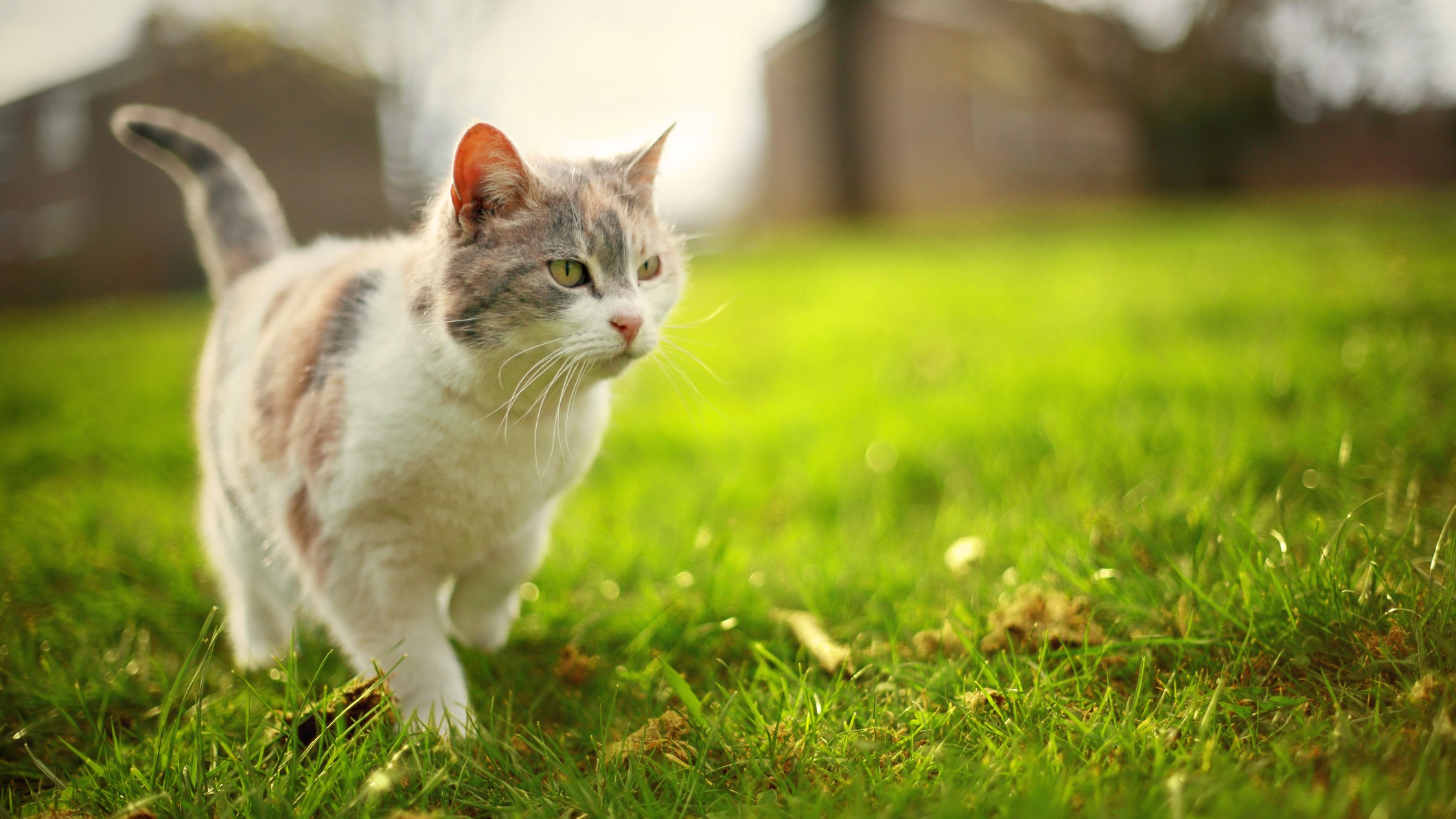How to train an outdoor cat to use a litter box
Cats often toilet outside, but how do you train an outdoor cat to use a litter box?

There are many reasons why you might want to train your outdoor cat to use a litter box. If you’ve recently provided a loving home to a rescue cat, you might not know much about their previous life. Not all will have lived in a home environment; some may have been feral or stray or just lived outside.
If this is the case, they might not be familiar with a litter box. Equally, if you have to move from a house with a garden to a flat or apartment with no outside space, you might face the challenge of litter training a cat who was previously quite happy going outside to toilet. Preparation is key: did you know, for instance, that picking the right cat litter and box is essential before you start training?
Can an outdoor cat be trained to use an indoor litter box?
Although it might sometimes feel like an impossible task, litter box training an outdoor cat can be done! It's best to manage your expectations, though, because training will take time and patience.
Thankfully, cats are naturally clean and private when it comes to toileting, which will work in your favor if you're trying to train them to use a litter box. Following the advice and steps below should give you the best chance of success.
Preparing to litter train your outdoor cat
Before you start the actual training, it’s important to do some preparation. If you’re moving home and your new place doesn’t have a garden, it’s worth starting the preparation before you move, if you can.
Decide which cat litter box style your cat is most likely to prefer If they are private or nervous, a covered litter box might make them feel most at ease. Smaller cats might struggle to get into a litter box with very tall sides, while some bigger cats might not enjoy the restriction of a roof overhead!
Consider the type of cat litter Try to find out which type of cat litter suits your cat best. You may know where they tend to go to the toilet while they're outside – maybe a flowerbed, a gravel path, or an area of lawn.
Get the best advice, tips and top tech for your beloved Pets
Some cat litter materials can be pretty similar to gravel or soil. Choosing something similar to their current toilet environment will help smooth the transition from outside to the litter box.
Make the home as stress-free as possible Using an anti-stress plug-in, diffuser, or spray will help to keep your kitty relaxed, making them most receptive to training. It’s also a good idea to keep children, and other pets distracted or out of the way.
Keep the treats handy Your cat will need more than just a pat on the back as a reward for getting it right.

Steps to train your outdoor cat to use a litter box
Once you've completed the preparation, you're ready to start training your cat! Remember that you'll only be expecting your cat to take baby steps rather than completing the training in a day or two.
There are two approaches to training your outdoor cat to use a litter box. Which one you use will depend on whether they still have access outside to toilet, or whether they're now kept entirely indoors.
If your cat still has access outside
If your cat still has access outside, you have the benefit of introducing the litter box in the outdoor environment. Not every cat will choose to use it when they still have the option of going outside elsewhere, but it’s still beneficial that it’s not a strange object when you bring it inside.
If you fail to make progress in a reasonable period of time, it's worth considering whether your choice of litter box and cat litter substrate is the problem.
- Start by providing a litter box outside the back door (or wherever they come and go). This works best if you have somewhere undercover so that it's not affected by the weather. Encourage them to use it and reward them with a treat when they show interest.
- If you spot them using the litter box, give them a treat immediately as positive reinforcement.
- Once your cat has used the litter box a few times, move it to just inside the house, near their normal exit. This means that they will spot it as they are heading outside and have the option to use it. Again, start by rewarding any interest, and always reward them when they use it successfully.
- Once these steps are completed, you can consider preventing further access outside, especially if your cat won’t have outside access in the long term. Ensure that your cat continues to use the litter box once they are unable to go outside.
- Move the litter tray in stages to the location where you want it to be long-term. This should be a quiet, private area where your cat can feel comfortable. Continue to reward your cat until they are successfully using the litter box in its final position.
- Provide at least one additional litter box elsewhere in the home.

If your cat doesn’t have outside access
If you live in a home without outdoor access with a previously outdoor cat, you won't have the option of the previous gradual approach. That doesn't mean that you're doomed to failure, though! Here are the training steps to follow:
- Set up your litter boxes in appropriate locations where your cat will feel most at ease.
- Reward your cat with a treat when they approach the tray and every time you see them use it.
- Ignore any accidents, rather than shouting or punishing your cat. Instead, if they have repeated accidents in a specific location, consider moving the litter box to this area.
- If your cat isn't getting the hang of it, experiment with the type and amount of cat litter, and consider a different style of litter box.
- Persevere! Digging a hole and burying their poop is a natural behavior for cats. So, as long as you provide the right environment, they should eventually get the idea!
Conclusion
Many people think training dogs is much easier than training cats, but some cats are very receptive to training. Combine this with your cat's natural desire to dig when they go to the toilet, and you can see why training your cat to use a litter box might not be so hard after all!
If you follow these tips, your cat companion should be transformed into a reliably litter-trained lodger in no time!
Dr Hannah Godfrey is a small animal vet who graduated from the Royal Veterinary College in 2011 and began work straight away at a busy mixed practice. Initially, she treated all species, but focussed on small animals from 2014. She has a passion for soft tissue surgery, ultrasound, and canine and feline dentistry, having completed additional training in these areas.

